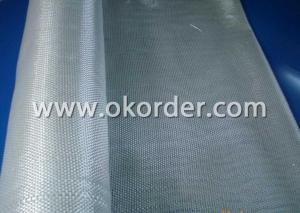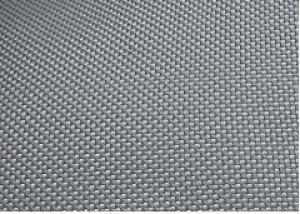Fiberglass Fabrics Grinding Wheel Cloth
- Loading Port:
- Shanghai
- Payment Terms:
- TT OR LC
- Min Order Qty:
- -
- Supply Capability:
- 200吨 m.t./month
OKorder Service Pledge
Quality Product, Order Online Tracking, Timely Delivery
OKorder Financial Service
Credit Rating, Credit Services, Credit Purchasing
You Might Also Like
fiber glass
| Specifications of fiberglass cloth for grinding wheel | ||||||||
| style | tex | inch | (N/50mm) tensile strength | weave | ||||
| (g/㎡)weight | warp | fill | warp | fill | warp | fill | ||
| CG85-14 | 85±5% | 44×2 | 66 | 14±0.5 | 14±0.5 | ≥900 | ≥700 | Leno |
| CG125-14 | 125±5% | 66×2 | 99 | 14±0.5 | 14±0.5 | ≥1300 | ≥1300 | Leno |
| CG125-8 | 125±5% | 99×2 | 198 | 8±0.5 | 8±0.5 | ≥1000 | ≥1000 | Leno |
| CG130-7×6 | 130±5% | 132×2 | 264 | 7±0.5 | 6±0.5 | ≥1200 | ≥1100 | Leno |
| CG160-5 | 160±5% | 198×2 | 396 | 5±0.5 | 5±0.5 | ≥1300 | ≥1300 | Leno |
| CG190-6 | 190±5% | 198×2 | 396 | 6±0.5 | 6±0.5 | ≥1500 | ≥1500 | Leno |
| CG235-8×6 | 235±5% | 198×2 | 495 | 8±0.5 | 66±0.5 | ≥2100 | ≥1900 | Leno |
| CG260-5 | 260±5% | 330×2 | 660 | 5±0.5 | 5±0.5 | ≥2200 | ≥2200 | Leno |
| CG320-5×4 | 320±5% | 330×2 | 1200 | 5±0.5 | 4±0.5 | ≥2600 | ≥2600 | Leno |
| CG380-5×4 | 380±5% | 528×2 | 1200 | 5±0.5 | 4±0.5 | ≥3200 | ≥2600 | Leno |
| CP145-14 | 145±5% | 132 | 132 | 14±0.5 | 14±0.5 | ≥1500 | ≥1500 | Plain |
| CP220-8 | 220±5% | 396 | 396 | 8±0.5 | 8±0.5 | ≥2200 | ≥1800 | Plain |
| CP260-8 | 260±5% | 396 | 396 | 8±0.5 | 8±0.5 | ≥2200 | ≥2200 | Plain |
| CP330-8 | 330±5% | 528 | 528 | 8±0.5 | 8±0.5 | ≥2900 | ≥2900 | Plain |
| CP420-8 | 420±5% | 660 | 660 | 8±0.5 | 8±0.5 | ≥3500 | ≥3500 | Plain |
| CP250-9 | 250±5% | 352 | 352 | 9±0.5 | 9±0.5 | ≥2000 | ≥2000 | Plain |
| CP275-9 | 275±5% | 396 | 396 | 9±0.5 | 9±0.5 | ≥2300 | ≥2300 | Plain |
| CP300-9 | 300±5% | 440 | 396 | 9±0.5 | 9±0.5 | ≥2800 | ≥2600 | Plain |
| CP260-11 | 260±5% | 297 | 297 | 11±0.5 | 11±0.5 | ≥2200 | ≥2200 | Plain |
| CP330-11 | 330±5% | 396 | 396 | 11±0.5 | 11±0.5 | ≥2900 | ≥2900 | Plain |
| CP180-18 | 180±5% | 132 | 132 | 18±0.5 | 18±0.5 | ≥1900 | ≥1900 | Plain |
- Q: How does fiberglass fabric perform in fire-resistant applications?
- Fiberglass fabric is an excellent choice for fire-resistant applications due to its inherent properties. When exposed to fire, fiberglass fabric does not burn or support combustion. It has a high melting point, which allows it to retain its structural integrity even at high temperatures. Furthermore, fiberglass fabric does not release toxic gases or smoke when exposed to fire, making it a safe option for fire-resistant applications. This is particularly important in enclosed spaces, as the absence of toxic fumes can help prevent health hazards and promote safe evacuation. In addition to its fire resistance, fiberglass fabric also offers other benefits. It is lightweight and flexible, making it easy to handle and install. It is also highly durable and resistant to chemicals, moisture, and UV radiation. Overall, fiberglass fabric is an excellent choice for fire-resistant applications due to its ability to withstand high temperatures, its non-combustible nature, and its resistance to toxic fumes. It provides a reliable and safe solution for various industries where fire protection is crucial, such as construction, automotive, aerospace, and manufacturing.
- Q: Can fiberglass fabric be used for making outdoor furniture?
- Indeed, outdoor furniture can be crafted using fiberglass fabric. This material, known for its durability and resistance to weather conditions, proves apt for outdoor settings. Its strength, combined with its lightweight nature, allows for versatile design possibilities as it can be shaped and molded into various forms. Moreover, fiberglass fabric's resilience to moisture, UV rays, and fluctuations in temperature ensures that the furniture will not deteriorate, lose color, or develop cracks over time. Its minimal upkeep demands and extended lifespan make it a perfect selection for outdoor furniture, offering both practicality and visual appeal.
- Q: Hello, could you tell me how to do the surface treatment under the glass fiber cloth? Thank you
- Wash with acid and water and alcohol!
- Q: Is fiberglass fabric suitable for making car covers?
- Yes, fiberglass fabric is suitable for making car covers. It is known for its durability, strength, and resistance to heat and chemicals, making it an excellent choice for protecting vehicles from various environmental elements such as UV rays, rain, and dust. Additionally, its lightweight nature allows for easy handling and storage of the car cover.
- Q: How much glass fiber cloth and how much epoxy resin does it take to make a square meter of fiberglass?
- There is a construction personnel operation, proficient and skilled, professional and non professional will is much better. I suggest you try it yourself, it will be better.
- Q: Can fiberglass fabric be used for insulation in power distribution facilities?
- Indeed, insulation in power distribution facilities can utilize fiberglass fabric. This incredibly versatile material boasts remarkable thermal insulation properties. With its resistance to high temperatures, it effectively inhibits heat transfer, rendering it suitable for power distribution facility insulation. Furthermore, fiberglass fabric is fireproof, an essential feature in areas housing electrical equipment. Its durability, flexibility, and capacity to withstand adverse conditions establish it as a viable option for power distribution facility insulation.
- Q: What is the difference between epoxy fiber glass cloth flooring and anticorrosive floor?
- The two floor effect is not very ideal, for one or two years will appear after the cracking and hollowing phenomenon of pit even powdering.
- Q: Can fiberglass fabric be used for insulation in cryogenic applications?
- Fiberglass fabric is suitable for insulation in cryogenic applications because of its exceptional insulating properties. These properties enable it to effectively trap air pockets within its structure, reducing heat transfer. Consequently, it is ideal for maintaining extremely low temperatures in cryogenic environments. Moreover, fiberglass is a non-flammable material that plays a crucial role in ensuring safety in cryogenic settings. Its resistance to moisture and chemicals further enhances its suitability for cryogenic insulation. Nevertheless, it is vital to carefully choose the specific type of fiberglass fabric for cryogenic applications. There are various grades and thicknesses available, and the selection should be based on the specific requirements of the cryogenic application to achieve optimal insulation performance. In conclusion, fiberglass fabric's excellent insulating properties, non-flammability, and resistance to moisture and chemicals make it suitable for insulation in cryogenic applications. However, it is essential to select the appropriate type of fiberglass fabric to ensure optimal insulation performance in cryogenic environments.
- Q: How does fiberglass fabric compare to other types of fabrics?
- Fiberglass fabric has several unique characteristics that set it apart from other types of fabrics. Firstly, fiberglass fabric is extremely strong and durable. It has a high tensile strength and can withstand heavy loads and stress without tearing or stretching. This makes it an ideal choice for applications where strength and durability are crucial, such as in industrial settings or for outdoor equipment. Secondly, fiberglass fabric is highly resistant to heat and fire. It has a high melting point and does not catch fire easily, making it a suitable choice for applications where fire safety is a concern, such as in insulation materials or protective clothing. Additionally, fiberglass fabric is resistant to chemicals and corrosion. It does not react with most chemicals, acids, or alkalis, making it suitable for use in environments where exposure to corrosive substances is common, such as in chemical plants or laboratories. Furthermore, fiberglass fabric is lightweight and flexible. Despite its strength, it is not bulky or heavy, making it easy to handle and work with. This flexibility also allows for its use in various applications where a certain level of flexibility is required, such as in the construction of curved surfaces or in the manufacturing of composite materials. However, there are some drawbacks to fiberglass fabric. It is not as comfortable or soft as other types of fabrics, which can make it less appealing for certain applications, such as in clothing or upholstery. Additionally, fiberglass fabric can be more expensive compared to some other types of fabrics. Overall, fiberglass fabric is a highly versatile material that offers exceptional strength, durability, heat resistance, chemical resistance, and flexibility. While it may not be suitable for all applications, it is an excellent choice for those requiring the unique properties it possesses.
- Q: How does fiberglass fabric perform in creep resistance?
- Fiberglass fabric has excellent creep resistance properties. It is able to withstand sustained loads over a long period of time without significant deformation or permanent damage. This makes it an ideal material for applications that require stability and durability under continuous stress.
Send your message to us
Fiberglass Fabrics Grinding Wheel Cloth
- Loading Port:
- Shanghai
- Payment Terms:
- TT OR LC
- Min Order Qty:
- -
- Supply Capability:
- 200吨 m.t./month
OKorder Service Pledge
Quality Product, Order Online Tracking, Timely Delivery
OKorder Financial Service
Credit Rating, Credit Services, Credit Purchasing
Similar products
Hot products
Hot Searches
Related keywords




























